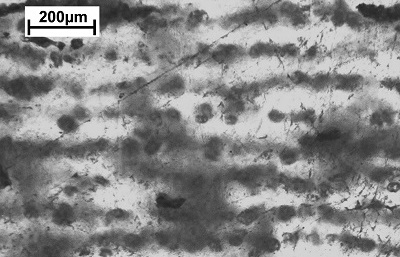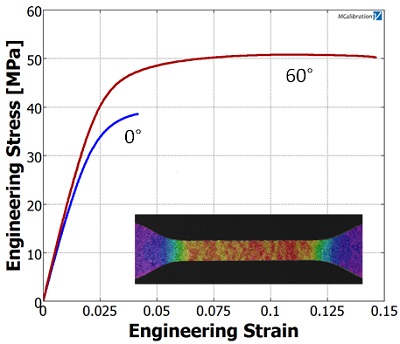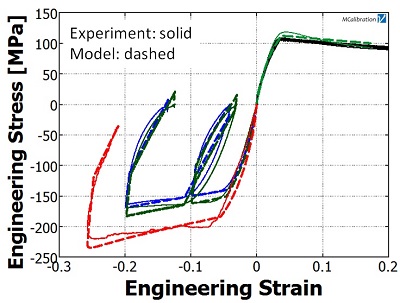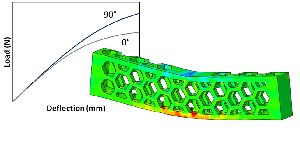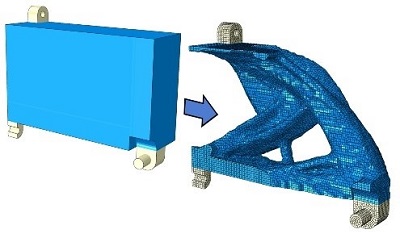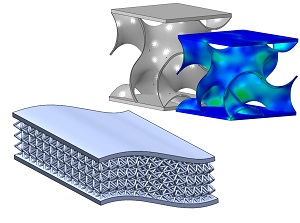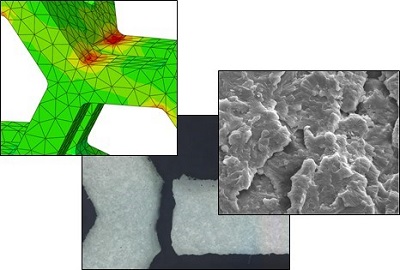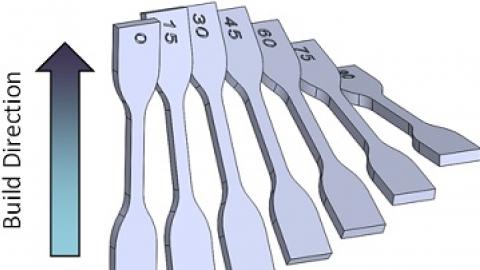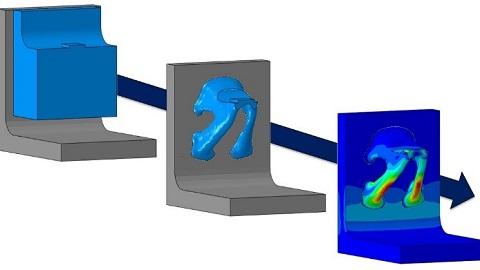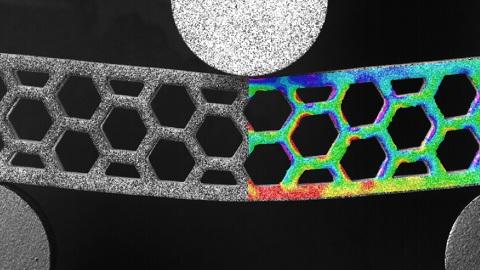Veryst Engineering helps clients realize high-performance additively manufactured parts. Our strong foundational knowledge in materials science and mechanics coupled with practical expertise in experimental methods and engineering software make us uniquely qualified to solve complex additive manufacturing (AM) challenges.
Materials Characterization
Additive manufacturing processes can introduce numerous microstructural features such as porosity, internal interfaces, or variations in crystallinity into a material that can strongly influence mechanical response and failure. Veryst engineers have expertise in characterizing the microstructure of additively manufactured materials to help clients improve processing parameters and understand material properties.
Mechanical Testing
Additively manufactured materials can exhibit complex mechanical behavior. Issues such as anisotropy, size effects, and nonlinear response must be measured experimentally. Veryst offers mechanical testing services focused on getting the data our clients need to make smart engineering decisions. Our testing lab is equipped with both commercial and custom-built test systems to conduct experiments over a wide range of loading rates, loading types, and environmental conditions.
Material Modeling for Finite Element Simulations
Finite element analysis (FEA) of additively manufactured components can be a challenge due to the complexity of the material behavior and uncertainty about part geometry. Veryst engineers are expert in finite element analysis of nonlinear materials and structures. We use all major commercial FEA packages and select the one most appropriate for any given problem.
Nonlinear Finite Element Analysis
Finite element analysis of additively manufactured components can be a challenge due to the complexity of the material behavior and uncertainty about part geometry. Veryst engineers are expert in finite element analysis of nonlinear materials and structures. We use all major commercial FEA packages and select the one most appropriate for any given problem.
Topology Optimization
Additive manufacturing offers engineers the opportunity to fabricate virtually any shape. Topology optimization is a computational tool that helps engineers efficiently explore the design space they are working in and find solutions. Veryst Engineering uses the latest topology optimization software to help create innovative, additively manufacturable design concepts.
Lattice and Cellular Structure Design
Additive manufacturing enables the fabrication of lattice and cellular structures which can provide exceptional performance in areas such as energy absorption or stiffness-to-weight ratio. However, the mechanics of lattice structures are highly complex and designing these structures is not easy. Veryst has expertise in the design and analysis of lattice structures for a wide range of end-use applications using both commercial and custom in-house software to identify optimized structures.
Failure and Root Cause Analysis
Root cause analysis is needed when additively manufactured parts fail unexpectedly during development or in service. Veryst engineers have decades of experience analyzing part failures and rely upon our broad expertise in experimental and computational methods to evaluate different failure modes such as fatigue, fracture, overload, and material deficiency.
